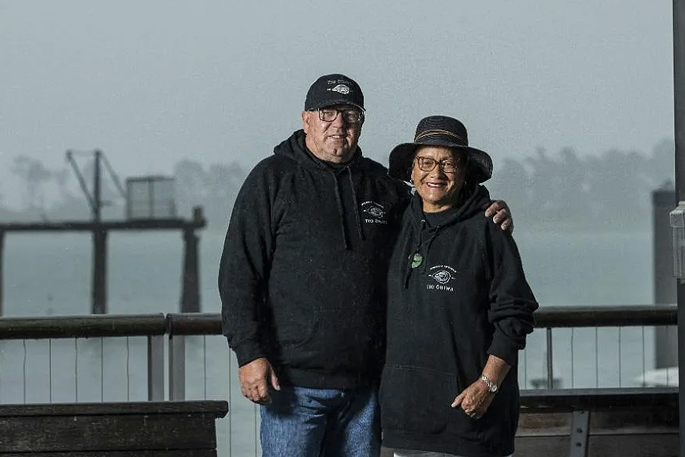When Simon and Wini Geddes bought a 56-year-old oyster farm in the Bay of Plenty, they wanted to create a platform for Māori in the aquaculture industry.
In June last year, the couple bought the four-hectare farm in Ohope, near Whakatāne, and renamed it Tio Ōhiwa.
Wini says Tio Ōhiwa is now one of the first 100 per cent Māori-owned oyster farms in the world and what makes it successful is the manaakitanga and whanaungatanga practised on site.
“It’s the people in it and the support from our kaumātua ... and our iwi and our hāpu,” she says.
The farm was established in 1968 and when the Geddes bought it last year, they transformed it into a whānau-owned business.
Wini says they can not share how much they bought it for but it was a “well-negotiated deal”.
Simon says it was hard to find a bank that would back them, so they turned to their own community – among others, the local marae and their whānau invested in the farm.
Since then, the workers on the farm have been collecting around 2000 oysters per day, Wini says, and most of them would then be sent to caterers and restaurants across the country.
The processing centre is next to the farm, she says, which makes it easier to preserve the freshness of the oyster.
A small quantity of the oysters are be sold at the road side shop, which is a popular fish and chips shop among locals, says Wini.
“It’s like an oversized food truck with no wheels.”
The hard shells of the oyster are recycled, says Simon.
Some shellsa are crushed to pieces and given to free-range poultry farmers who feed them to the chickens, and some are sent whole to landscapers, he says.
“There is a big potential for oyster shells to be recycled.”
Wini says they are working hard to establish the Tio Ōhiwa oysters as competitors of the more traditional Pacific oysters and Bluff oysters.
“It’s definitely a different taste and you can notice it in the texture, in the milkiness of it.”
The aim in the future is to develop through research a particular type of rock oyster that is resistant to diseases as well, Wini says.
The farm works closely with the Ministry for Primary Industries to manage water quality and with the Cawthron Institute in Nelson to check on the oysters’ well-being.
“They basically test the quality of our oysters. We send five to 10 oysters. Put them on urgent courier so they get to Cawthron in Nelson within 24 hours,” says Simon.
“And from there they test the flesh of those oysters.”
The Geddes daughter and son work for the farm too, with Olivia being a marketing executive and Ngamotu the farm manager.
Simon says the business also receives some funding to employ cadets and seven cadets are now working and training on the farm.
He says the environment poses the biggest challenge for the Tio Ōhiwa farm, as workers spend most of the day out in the water collecting oysters and then go back to the processing centre on-shore where they clean the oysters.
“You can’t control the weather,” he says.
Tio Ōhiwa also operated a cruise boat in the harbour.



0 comments
Leave a Comment
You must be logged in to make a comment.